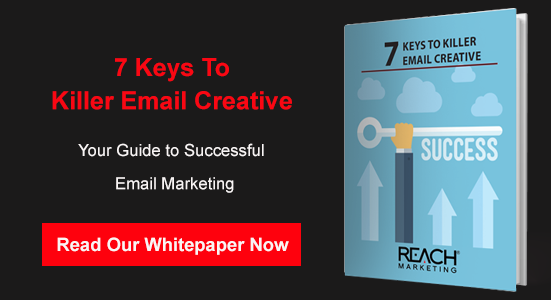It’s hard to overstate the importance of a great email program to successful digital marketing. With it, you’re able to generate new leads, gather information about your audience, deliver relevant content, spur sales with special offers, and reward customer loyalty, to name just a few of email’s benefits. It’s that very flexibility that sometimes makes it a challenge for marketers to manage. How do you maintain clean data? How do you customize emails for different marketing segments? How do you execute A/B split testing, and how quickly do you get your results?
Marketing automation streamlines email marketing from creation to testing to mailing to interpreting results. Although email’s already an efficient marketing channel, improvement here makes a big difference down the line because email’s your point of contact with new leads, loyal customers, and past buyers.
Data Governance and Hygiene
To have an impact, your email first needs to get to its intended recipient. Automation that handles data hygiene tasks for you, including removing hard bounces and monitoring soft bounces, frees you to focus on other elements of your email marketing campaign. Bounce rates affect overall deliverability, so managing these basic tasks is fundamental to the success of your campaigns. While most email service providers offer simple list management and maintenance, marketing automation software gives you a far larger toolset that expands your capabilities here and makes routine data hygiene simple.
Segmentation
Marketing automation systems collect mountains of data. That wealth of knowledge about your audience translates directly into more meaningful audience segmentation. You can auto-select groups by choosing shared demographic, firmographic, or behavioral traits, or you can customize segments for future mailings with a few clicks. The system also lets you group and manage segments together. For example, you might associate members of a specific industry into a single segment, then associate that segment with a closely affiliated industry so both segments get the same relevant messages.
Design Templates
Coming up with a unified design template for email is not only an excellent way to streamline your email marketing, but it’s also a great branding tool. You’ll see templates in plenty of B2C email correspondence; shoppers like to find information in familiar places so they know where to look for new merchandise, sale items, and online specials. For B2B businesses, organizing emails into templates serves the same purpose, and because you’re likely to correspond with your leads far more often over a longer sales cycle than B2C sectors, familiarity with the format is ideal.
Workflows and Triggers
One of the best uses of email is as an instant feedback channel for your leads. When they take action, they get an immediate response from you via autoresponders and triggered email events. With a smart workflow design, you’re able to set up a nurture campaign to cascade through numerous pre-written email messages based on the actions your leads take. These flows carry leads along predetermined paths, but they don’t feel mechanical or impersonal because you and your marketing automation system have already done the necessary homework to customize your email messages.
Email marketing shouldn’t become a tangle of dates, times, and triggers. With the right initial set-up, much of it can flow through automated channels.
© Reach Marketing LLC 2016 All Rights Reserved.







